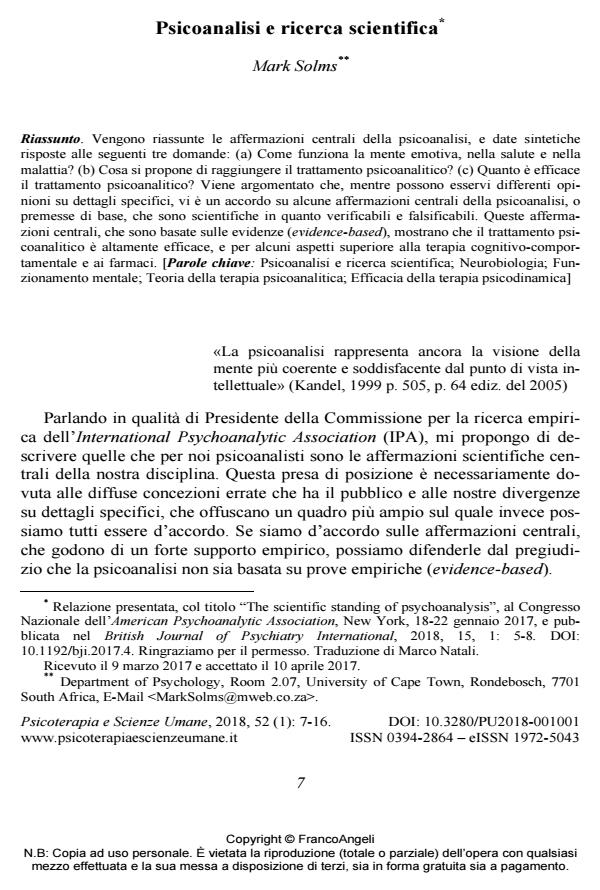The scientific standing of psychoanalysis
Journal title PSICOTERAPIA E SCIENZE UMANE
Author/s Mark Solms
Publishing Year 2018 Issue 2018/1
Language Italian Pages 10 P. 7-16 File size 80 KB
DOI 10.3280/PU2018-001001
DOI is like a bar code for intellectual property: to have more infomation
click here
Below, you can see the article first page
If you want to buy this article in PDF format, you can do it, following the instructions to buy download credits

FrancoAngeli is member of Publishers International Linking Association, Inc (PILA), a not-for-profit association which run the CrossRef service enabling links to and from online scholarly content.
The core scientific claims of psychoanalysis are summarized, and synthetic answers are given to the following three questions: (a) How does the emotional mind work, in health and disease? (b) What does psychoanalytic treatment aim to achieve? (c) How effective is it? While there are disagreements regarding specific details, there is a general agreement on some core claims of psychoanalysis. These core claims enjoy strong empirical support and are "evidence-based". Psychoanalytic treatment is highly effective, often superior to cognitive-behavior therapy and to medication.
Keywords: Psychoanalysis and scientific research; Neurobiology; Mental functioning; Theory of psychoanalytic therapy; Efficacy of psychodynamic therapy
Mark Solms, Psicoanalisi e ricerca scientifica in "PSICOTERAPIA E SCIENZE UMANE" 1/2018, pp 7-16, DOI: 10.3280/PU2018-001001